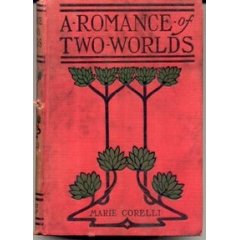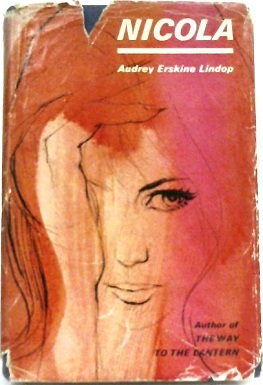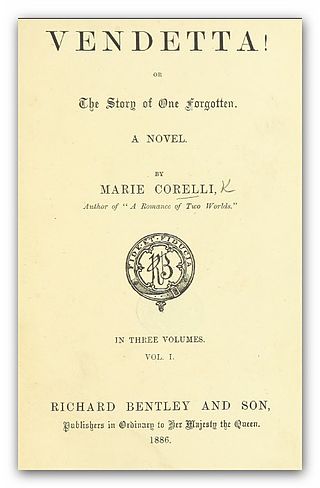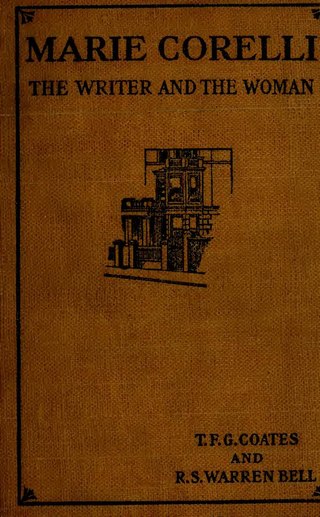 | |
| Author | Marie Corelli |
|---|---|
| Country | United Kingdom |
| Language | English |
| Genre | Drama |
Publication date | 1923 |
| Media type | |
Love and the Philosopher is a 1923 novel by the British writer Marie Corelli. [1] [2]
 | |
| Author | Marie Corelli |
|---|---|
| Country | United Kingdom |
| Language | English |
| Genre | Drama |
Publication date | 1923 |
| Media type | |
Love and the Philosopher is a 1923 novel by the British writer Marie Corelli. [1] [2]

Arcangelo Corelli was an Italian composer and violinist of the Baroque era. His music was key in the development of the modern genres of sonata and concerto, in establishing the preeminence of the violin, and as the first coalescing of modern tonality and functional harmony.

Mary Mackay, also called Minnie Mackey and known by her pseudonym Marie Corelli, was an English novelist.

Absinthe: La Folie Verte is a concept album by Blood Axis and Les Joyaux de la Princesse. It is an homage to the cordial absinthe.

Wormwood: A Drama of Paris is an 1890 novel by Marie Corelli. It tells the sensational story of a Frenchman, Gaston Beauvais, driven to murder and ruin by the potent alcoholic drink absinthe.

The Sorrows of Satan is an 1895 Faustian novel by Marie Corelli. It is widely regarded as one of the world's first best-sellers – partly due to an upheaval in the system British libraries used to purchase their books, and partly due to its popular appeal. Roundly condemned by contemporary literary critics for Corelli's moralistic and prosaic style, it nonetheless had strong supporters, including Oscar Wilde and various members of royalty.
George Eric Mackay was an English minor poet, now remembered as the sponging half-brother of Marie Corelli, the best-selling novelist. Mackay and Corelli, born Mary Mackay, were the children of Charles Mackay, by different mothers.

A Romance of Two Worlds was Marie Corelli's first novel, published in 1886. It referenced the contemporary debate between creationism and evolution, as well as supernatural themes, overlaid with elements of science fiction. The book was an immediate commercial success, establishing Corelli as one of the most popular writers of the time, though like much of her subsequent work, it was negatively received by critics.

Helen Cecelia Black, née Spottiswoode was an English journalist, best known for the series of interviews with women writers published in book form in 1893 as Notable Women Authors of the Day.

Bertha Vyver was a caretaker for Scottish poet Charles Mackay and the companion of Marie Corelli. From 1875 until his death in 1889, Vyver kept house and nursed Mackay, later caring for her own mother prior to her death. Relieved of her nursing duties, Vyver remained with Corelli encouraging and facilitating her writing career. When Corelli died, Vyver became executor of her literary estate and wrote a biography of the author.

The End of Her Honeymoon is a 1913 novel by the British writer Marie Belloc Lowndes.

The Christine Diamond is a 1940 novel by the British writer Marie Belloc Lowndes.

The Chianti Flask is a 1934 mystery novel by the British writer Marie Belloc Lowndes.

Another Man's Wife is a 1934 novel by the British writer Marie Belloc Lowndes.

Letty Lynton is a 1931 novel by the British writer Marie Belloc Lowndes. It is loosely inspired by the case of Madeleine Smith, a young woman accused of murder.

Jenny Newstead is a 1932 melodramatic suspense novel by the British writer Marie Belloc Lowndes. It is based on the story of the serial killer George Joseph Smith.

What Timmy Did is a 1921 novel by the British writer Marie Belloc Lowndes.

Nicola is a 1959 novel by the British writer Audrey Erskine Lindop. An attractive young woman returns to her home village after a term in prison, and discovers how much she is resented by some of the inhabitants.

Ardath is an 1889 novel by the British writer Marie Corelli. It was a popular success.

Vendetta!, or The Story of One Forgotten is an 1886 romance by Marie Corelli. Corelli's second novel, it tells the story of an Italian count who, after being mistakenly declared dead, returns home to find his wife romantically involved with his best friend and seeks revenge on them both. The book was a popular success, but received tepid notices from critics.

Marie Corelli: the Writer and the Woman is a 1903 biography of British novelist Marie Corelli written by Thomas F. G. Coates and R. S. Warren Bell. It was written while Corelli was still alive, around halfway through the 40-year period during which she was actively writing.